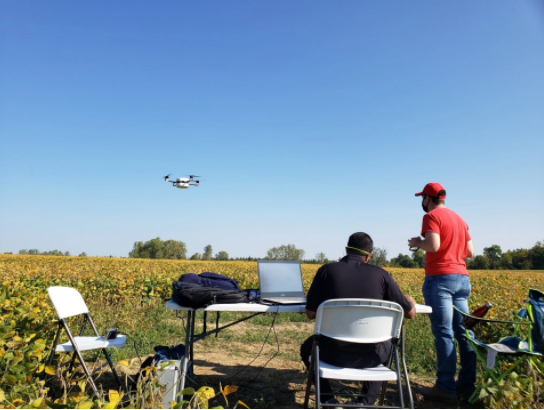CAL Analytics completed tests using its regional detect and avoid (DAA) system as a service capability for Unmanned Traffic Management (UTM) environments. According to a press release, the two-day demo showed the technology’s ability to prevent collisions between unmanned aircraft and other airborne traffic in a variety of real-world scenarios.
CAL Analytics DAA service, powered by the FAA’s ACAS sXu software (Airborne Collision Avoidance System), enables the UAS to “see and avoid” using sensor and guidance technology that do not have to be equipped on the aircraft, thereby providing much needed relief to airborne equipage requirements. Until airborne DAA sensors can be matured to the point they provide affordable and reliable service, this scalable DAA service will provide much needed protections against airborne hazards for UAS to safely operate beyond visual line-of-sight (BVLOS) without ground observers.
“The successful flight tests are a key step to bringing routine commercial drone operations to a reality,” said Dr. Sean Calhoun, Managing Director of CAL Analytics. “By providing the UTM system-wide DAA as a service (without the need for onboard sensors), our cloud-based solution makes it easy for UAS service suppliers (USS) to provide automated DAA service with almost no overhead in any area with surveillance coverage.”
A key advancement of CAL’s DAA approach is the integration with a USS to receive real-time telemetry for the UAS and pass on DAA guidance commands for automated maneuvering. CAL partnered with AiRXOS (part of GE Aviation) to achieve this full representative integration. By working with the USS directly as the gateway to the UAS, the DAA system can scale as needed real-time based on demand.
“Surveillance, strategic deconfliction, and tactical deconfliction, i.e. DAA, are critical services to support a broad spectrum of advanced UAS operations including Beyond Visual Line of Sight (BVLOS), says Ted Lester, Chief Technologist, AiRXOS. In integrating CAL Analytics DAA-as-a-service with AiRXOS’ UAS Air Mobility Platform, the flight demonstrations show a clear path to safely operating BVLOS without ground observers that’s achievable now. AiRXOS is pleased to have helped perform this critical testing with CAL Analytics.”
Over the two-day live demonstration, CAL used telemetry, ground surveillance data from AiRXOS and SRC, Inc. to execute fully automated DAA guidance commands for both sUAS vs. sUAS and sUAS vs. manned aircraft. The integration of multiple UTM service providers provides system-wide layered deconfliction services including flight plan conflict detection and automated collision avoidance.
“Our mission is to provide protection to the entire airspace, regardless of platform type or equipage restrictions,” said Josh Silbermann, ACAS sXu technical lead at the Johns Hopkins University – Applied Physics Lab supporting the FAA’s TCAS Program Office. “As we anticipate the introduction of automated and autonomous systems into the airspace, executing high densities of parallel critical missions, in order to maintain the level of safety that is expected of our national airspace, a robust DAA system needs to be at the heart of that airspace.”
For more information visit:
www.calanalytics.com




